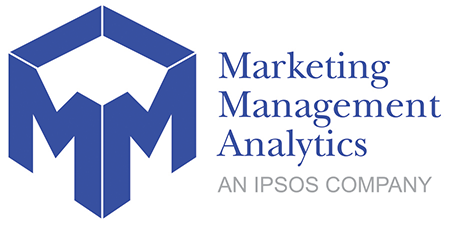Automotive Marketing Trends, The Role of Marketing Analytics in a Changing Industry
Written by Michael Macri

The automotive industry is a capital-intensive industry layered in complexity. From manufacturing to government regulations to wholesale distribution. There is very little simple about it.
That said, for the last century the complexities of the business were relatively stable and provided a degree of predictability. Manufacture a product, ship it to the dealer, sell it. What price strategy missed incentives will fix — and spend a lot on advertising.
Today however, arguably, the industry is experiencing more disruption in the last five years than the last 100 years combined. It’s a high stakes game forcing OEMs to ponder where to place bets and how to fund the future without degrading the present.
Disruptive factors include Shared Mobility/Ride Sharing, Micro-Mobility, Connectivity Services/ Digital Updates, Subscription Revenue, Autonomous/ Self-Driving Vehicles, Electric Vehicles, and finally an effort to shift from being a wholesale distributor to a DTC (Direct to Consumer/ e-commerce) purchase process model – reducing the role of the Dealer in the process.
Understanding Automotive Marketing Trends That Will Drive Incremental Revenue
In order to fund these new revenue streams automotive marketing and analytics – in particular Marketing Mix Modeling, needs to evolve to support this new environment so as to enable OEMs to take advantage of the new and emerging landscape, and opportunities that come with it.
This requires being keenly aware of evolving automotive marketing trends and adopting new ways of working based on an array of innovative marketing analytical solutions that begins with evolving traditional Marketing Mix Models to Holistic Econometric Mix Models and Agile Attribution Models that address the following:
- Understanding Consumer Behavior: By combining various sources of first- and third-party data OEMs can gain insights into what drives consumer decisions and tailor their marketing segmentation accordingly. This segmentation must go beyond new vehicle propensity models to include service and subscription models and can be marketed with low, targeted spending to improve both effectiveness and efficiency while increasing Marketing ROI.
- Optimizing Pricing Strategies Beyond the Immediate Sale: Shifting beyond transactional pricing to consider Customer Lifetime Value (CLV) will be an essential consideration in the future. OEMs that can optimize pricing strategies to maximize CLV through shared revenue with the Dealer Body and/ or capitalize on subscription models will increase their margins allowing for incremental investment in growth areas through data-driven portfolio optimization.
- Personalized Marketing Campaigns – Including Using First Party Data in an Innovative Manner: In today’s addressable media ecosystem marketing analytics enables advanced audience planning, targeting and optimization with a closed loop and always-on Marketing Mix Modeling capability. Automotive marketers must move past platitudes of “1:1 marketing” and develop advanced statistical clustering methods that can be operationalized by media practitioners and embedded into the ongoing planning and buying processes.
- Artificial Intelligence. The combined increase in cloud computing, big data coming off a vehicle, and sophisticated software offerings that can synchronize these data streams instantaneously should be used to develop unique insights and create predictive models that lower costs and optimize these new revenue streams.Coordinating these efforts with the distribution and product development will be key to harmonizing costs and incremental revenue in the automotive industries future.
- Shift to EVs may be short-circuiting. Many factors led auto executives to see a dramatic shift from gasoline powered vehicles to electric vehicles: government regulations, climate influencers, Chinese EV makers, and equally important Tesla’s stock valuation multiplier.The voice of the consumer was drowned out vs. the above and to be fair, supply disruptions masked true industry demand for nearly 3 years. Moving forward marketing mix models that can accurately capture true demand and the corresponding price points will be worth billions (in saved and incremental investing).
- Ability to Backwards Engineer Outcomes: Marketing Analytics Teams must work collaboratively with other OEM functions to develop advanced models that consider the total profitability over time, i.e., a lower transaction price at the time of sale may be more profitable over time given the average length of ownership is 12+ years. This will make Dealers more important – and may call into question the DTC strategy.
Next Steps to Master Automotive Marketing Trends and Drive Incremental Revenue
The automotive industry’s evolution requires a shift towards more data-driven, customer/audience-centric approaches to marketing measurement, optimization and forecasting. By partnering with Ipsos MMA’s Marketing Mix Modeling, Agile Attribution capabilities and automotive consulting team, OEMs will benefit from significantly increased and forward-looking transparency enabling them to adapt to the changing landscape and capitalize on new revenue opportunities while improving both short-term and long-term Marketing ROI, ensuring long-term sustainability and competitive advantage.
At Ipsos MMA, our Marketing Mix Modeling and Unified Measurement (Marketing Mix Modeling and Agile Attribution) platforms are aligned directly to our client partners business challenges and needs as well as configured to support the uniqueness of the Automotive industry. Our experienced consultants are ready to partner with and collaborate in designing an approach and change management program that fits the specific OEM needs in order to put companies ahead of the game when it comes to addressing today’s automotive marketing trends.
Contact us to start the conversation!
